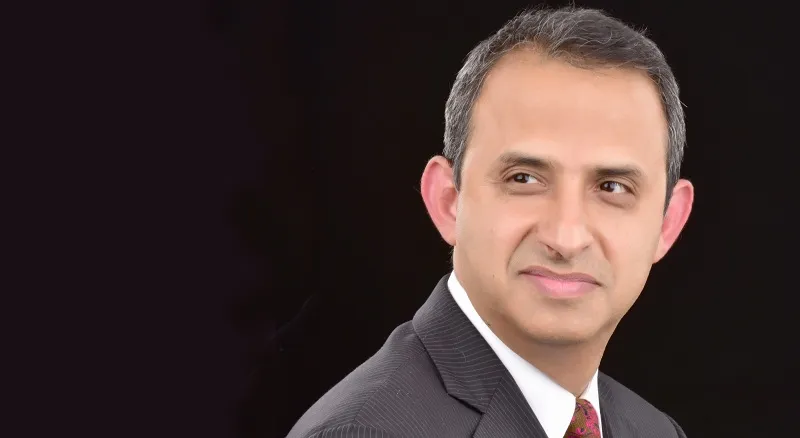Wyde pitches for the trillion-dollar insurance market
While it may not be one of those typical posh offices in Manhattan’s Park Avenue, the office of Wyde.com is nonetheless upscale for a small technology business. At building No. 460, Rajesh Makhija, CEO of the sub-$50-million software product SMB, lays out Wyde’s plans for reinventing legacy solutions for the mobile era. Wyde has been around for over 19 years, creating software products and technologies that manage policy administration processes for insurance and wealth management companies. The company has seen some steady growth, and now consists of a 250-member team.

Rajesh is now convinced that with two decades worth of knowledge behind the company, working with Tier-II insurance companies, it is time for Wyde to go after big projects. “Our backend software is very popular with financial companies. The new set of products, which we are building in the cloud, works on subscription-based business models, and will move the highly regulated insurance sector into the digital era,” says Rajesh. His strategy is to look at the insurance buyer, assessing how the buyer wants his insurance company to serve him digitally. Even today, the industry sees a barrage of sales people with their calculators trying to sell prospective customers the moon.
Rajesh believes that he has created a company that is sustainable, capable of growing at rates far higher than the industry growth rate. He believes that he can achieve these revenues because insurance companies will spend to go digital and do away with legacy by the end of the decade. Wyde's cloud could change the way insurance or any financial service is delivered to the smartphone using customer and reinvent backend processes in companies. Backend processes may cover multiple branch offices on systems that do not connect with each other and handle multiple transactions at the branch level and not at the corporate level. These legacy systems will eventually pave way for a common platform for data sharing and understanding of customer profile. This cost can be reduced by going digital across processes. However, it is easier said than done.
Here is why technology is vital
Every year, the 55 biggest Indian insurance companies (life and non-life) spend upwards of Rs 600 crore on marketing activity. They are also pushing insurance buyers to go digital. This is in line with a similar trend being seen globally. According to Statista.com, the top ten insurance companies in the world spend $3.6 billion on advertising and marketing, aggressively targeting increases in both their new business as well as renewal premiums.
While the sales force still plays a vital role in selling insurance, technology is changing the way it is sold to buyers. Today, policies can be customised by actuaries based on the financial data provided by the buyer. This is where Wyde.com wants to change the game. Its engineers are building solutions that will take financial details of the customer online and suggest policies that fit their criteria. “This is a faster way to convert a lead. Once the policy is picked, the sales force can take over to close the deal,” says Rajesh.
He adds that Wyde has always been good at building technology to manage backend processes, and that this new solution will become a bridge between the consumer and the company. “It makes banking and insurance personal, along with managing sales cycles in the backend,” says Rajesh.
Alongside the increase in marketing spends, there has been a corresponding increase in technology spends to boost policy buying.
According to Gartner Inc., insurance companies in India spent Rs 14,000 crore on new technologies in 2015, and this number is expected to grow in the high teens over the next decade. Globally, the banking and finance industries spend more than $2 trillion on technology. According to Gartner, IT spending by banking and securities firms in the mature Asia Pacific region will reach $19.1 billion in 2017, an increase of 4.7 percent from 2016. The insurance market itself is touted to pose a trillion-dollar opportunity.
"The banking and securities industry is working to reinvent its business models due to the entry of new, tech-savvy players, and established companies in the space are trying to integrate digital platforms firmly into business and operating models" says Moutusi Sau, principal research analyst at Gartner.
“There are many legacy systems that have to go digital, and we are already working on the process with several financial institutions,” says Rajesh.
Going digital is not easy
Insurance is an industry that uses disparate legacy IT systems, with different systems for corporate, trade, investing, sales and administration. Today, there is a need to link sales dynamically to data held by actuaries, and only technology enables such a linking. In the life insurance industry, policies are created by macro data that captures mortality, cost of living and retail inflation. Their investment cycle is also traditional. But the modern consumer needs standard policies with customised riders, and only digital technologies can bring a customer closer to the insurance business.
“Traditional ways of doing business, which is legacy IT, is not going to bring margins; IT is all about being closer to the customer than ever before,” says Sanchit Vir Gogia, CEO of Greyhound Research. Digital spends are going to increase, and so is competition. Wyde will have to compete with giants like Accenture and Oracle, who are deeply entrenched in legacy insurance systems and are investing heavily on digital technologies. The likes of Infosys and Wipro are also entrenched in building solutions for companies. These companies are also playing the platforms game and are pushing cloud based business models that work on subscription.
The sales strategy for Wyde is to use IT partners across the world and also enable customers to sign up digitally. “I am currently spending most of my time with Tier-I insurance company CEOs, showing them the power of an omni-channel strategy for insurance companies,” says Rajesh.
The needle will move if the CEOs of insurance companies understand how digital connects make the younger generation buy insurance for cars, healthcare, life and other retail needs. “Everyone acknowledges the cloud and the business gain from automation and analytics. But the sales cycles still continue to be long for smaller businesses. Digital transformation is the way forward,” says Ganesh Ayyar, CEO of Mphasis.
Mphasis acquired Wyde for a substantial valuation in 2011. Since his appointment as the CEO of Wyde in late 2014, Rajesh has been spearheading the company towards its transformation into a large business. The company has close to 25 clients today, and is focussing on winning large financial institutions. Wyde’s journey to large-scale growth will be greatly eased with the backing of Mphasis.







